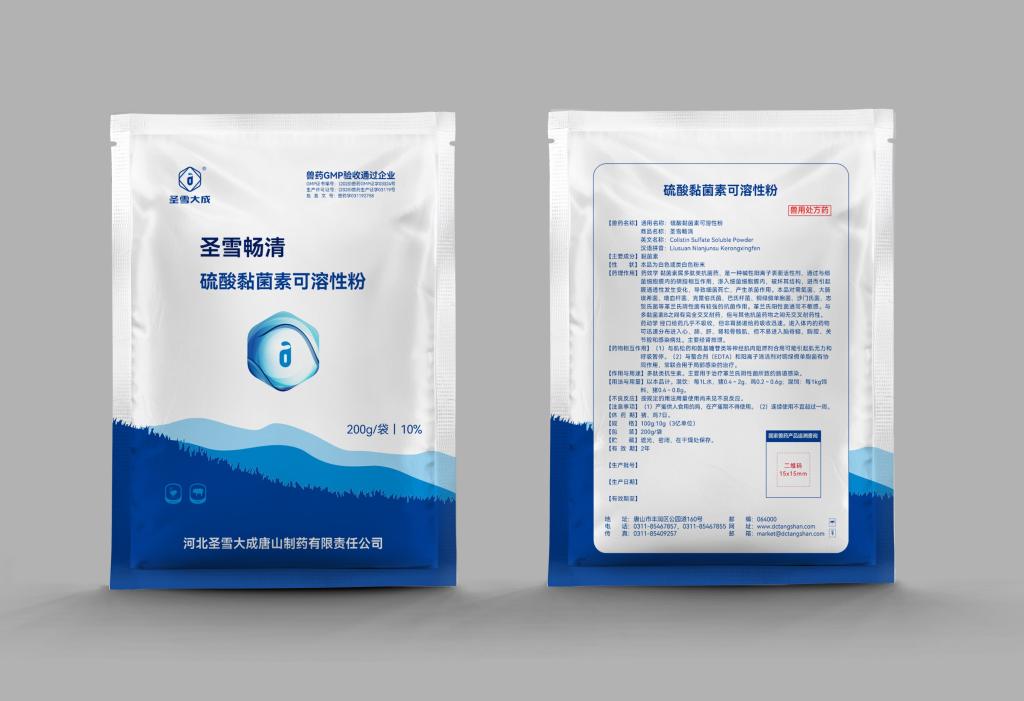Tel:0086 18231198596

News
Current Position:
Home >
News
>From Lab to Field: Colistin Sulfate Soluble Powder Applications Explored.
From Lab to Field: Colistin Sulfate Soluble Powder Applications Explored.
TIME:2023-12-29
I. Introduction: The Evolution of Colistin Sulfate Soluble Powder
Discovery and Early Development
Colistin, a polymyxin antibiotic, was first discovered in the 1940s. Initially overshadowed by newer antibiotics, its unique mechanism of action and effectiveness against Gram-negative bacteria have led to a resurgence in its use, particularly in colistin sulfate soluble powder form.
Synthesis and Formulation Innovations
The journey from laboratory discovery to practical applications involved innovations in the synthesis and formulation of colistin sulfate. These advancements enhanced its stability, solubility, and applicability in various fields.
II. Colistin Sulfate in Veterinary Medicine: Treating Animal Infections
Mass Medication Approaches
Colistin sulfate soluble powder is widely used in veterinary medicine, particularly in livestock farming. Mass medication approaches, where colistin is included in feed or water, aim to prevent and treat bacterial infections in animals.
Challenges in Veterinary Applications
While colistin sulfate is effective in treating bacterial infections in animals, challenges such as antibiotic resistance, concerns about animal health, and potential transmission of resistant strains to humans have raised questions about its responsible use in veterinary medicine.
III. Agricultural Applications: Improving Livestock Health and Productivity
Growth Promotion and Disease Prevention
In agricultural settings, colistin sulfate soluble powder is often used for growth promotion and disease prevention in livestock. The antibiotic's ability to enhance feed efficiency and prevent bacterial infections contributes to improved overall productivity.
Responsible Use in Agriculture
Balancing the benefits of colistin in agriculture with concerns about antibiotic resistance requires the implementation of responsible use practices. Antibiotic stewardship programs and alternative strategies aim to mitigate the risks associated with widespread colistin use in farming.
IV. Environmental Biotechnology: Colistin in Wastewater Treatment
Bioflocculation Properties
Colistin's bioflocculation properties have found applications in environmental biotechnology, particularly in wastewater treatment. Its ability to aggregate particles and form flocs contributes to the removal of contaminants from wastewater.
Challenges and Considerations
While colistin sulfate soluble powder shows promise in wastewater treatment, challenges such as potential environmental impact, the development of resistant bacteria in wastewater, and the need for effective removal processes must be carefully addressed.
V. Challenges and Concerns: Navigating Antibiotic Resistance and Environmental Impact
Emergence of Antibiotic-Resistant Strains
The extensive use of colistin sulfate soluble powder has been associated with the emergence of antibiotic-resistant strains. Understanding the genetic mechanisms and pathways involved in resistance is crucial for mitigating its impact.
Environmental Concerns and Ecological Impact
The discharge of colistin-containing effluents into the environment raises concerns about the ecological impact. Research is needed to assess the potential consequences of environmental exposure to colistin, including its persistence, accumulation, and impact on non-target organisms.
VI. Innovations and Alternatives: Exploring the Future of Colistin Applications
Research into Novel Antibiotics
Ongoing research explores the development of novel antibiotics with improved efficacy and reduced environmental impact. The identification of alternative compounds aims to address the limitations associated with the widespread use of colistin sulfate soluble powder.
Advanced Drug Delivery Systems
Innovations in drug delivery systems, such as nanoparticle formulations and targeted delivery approaches, offer potential solutions to enhance the effectiveness of antibiotics while minimizing their impact on the environment.
VII. Responsible Use and Regulatory Measures: Shaping the Future of Colistin Applications
Antibiotic Stewardship Programs
Implementation of antibiotic stewardship programs in veterinary medicine and agriculture is crucial for promoting responsible colistin use. These programs emphasize judicious antibiotic administration, monitoring resistance, and exploring alternatives.
Global Regulatory Measures
International regulatory bodies play a pivotal role in shaping the future of colistin applications. Guidelines and restrictions on its use, coupled with collaborative efforts, are essential to strike a balance between the benefits and risks associated with colistin sulfate soluble powder.
VIII. Conclusion: Navigating the Landscape of Colistin Sulfate Soluble Powder Applications
From its origins in the laboratory to its diverse applications in veterinary medicine, agriculture, and environmental biotechnology, colistin sulfate soluble powder has traversed a complex landscape. The benefits it brings to animal health and agricultural productivity are accompanied by challenges, including antibiotic resistance and environmental concerns. Navigating this landscape requires a multidisciplinary approach that prioritizes responsible use, ongoing research into alternatives, and global collaboration to ensure the continued efficacy of colistin and address the evolving challenges associated with its applications. As colistin continues to shape various fields, a proactive and balanced approach is essential to harness its benefits while minimizing potential drawbacks.

 CONTACT
CONTACT




